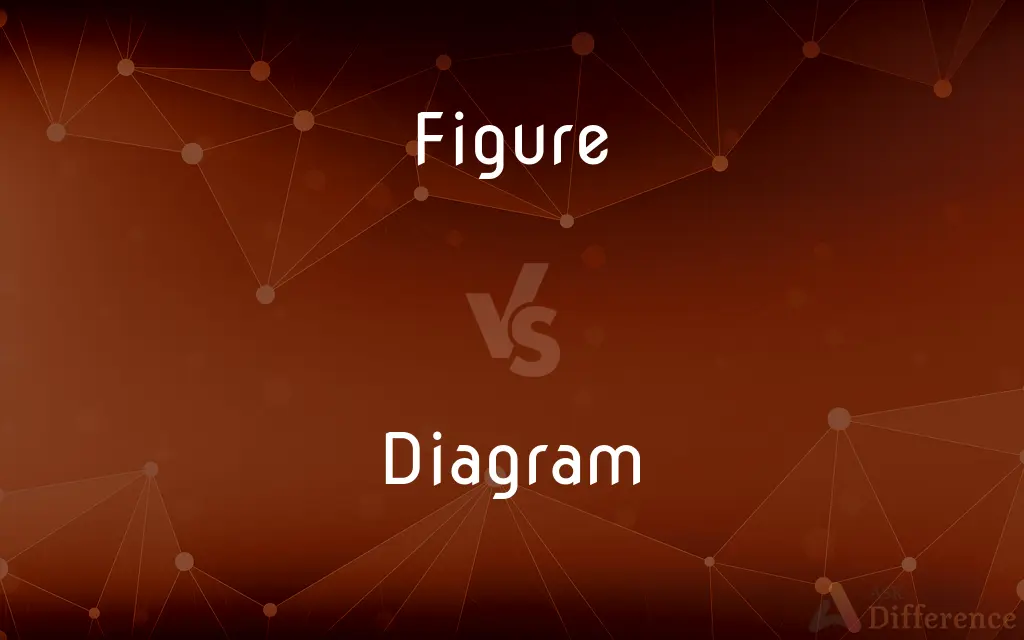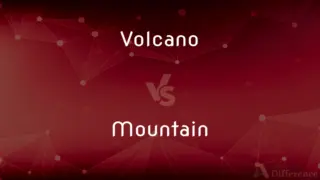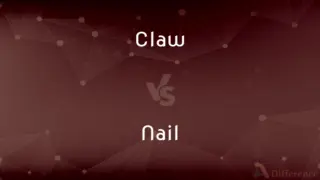Figure vs. Diagram — What's the Difference?
By Tayyaba Rehman & Maham Liaqat — Updated on March 4, 2024
A figure is a broad term for any type of illustration or graphical representation used in text, while a diagram is a specific type of figure that explains or clarifies information through a structured format.

Difference Between Figure and Diagram
Table of Contents
ADVERTISEMENT
Key Differences
Figures encompass a wide range of visual aids, including photographs, charts, graphs, drawings, and diagrams. They serve to complement or illustrate the textual content, making complex information more accessible. Diagrams, on the other hand, are a subset of figures specifically designed to represent ideas, concepts, or data in a structured and often simplified visual form. Diagrams use shapes, symbols, and lines to convey relationships, processes, or systems clearly and efficiently.
Diagrams are distinguished by their purpose of explaining or clarifying information. Whether it’s a Venn diagram showing the overlap between two concepts or a schematic diagram detailing the parts of a machine, diagrams are crafted to make understanding complex systems or relationships easier. Figures, in contrast, may not always carry such a specific explanatory purpose but are used broadly to support or enhance textual content.
The creation of diagrams requires a certain level of abstraction and simplification, where the key components are represented by symbols or simplified shapes. This is in contrast to some types of figures, such as photographs or detailed illustrations, which aim to capture reality as accurately as possible.
The selection between using a figure or a diagram depends on the intended purpose within the text. If the goal is to clarify or illustrate a specific concept or process, a diagram is often more suitable. However, if the aim is to provide a visual example or to enhance the aesthetic appeal of the document, a broader range of figures might be considered.
Comparison Chart
Definition
A broad term for any type of visual aid used in text.
A specific type of figure designed to explain or clarify information.
ADVERTISEMENT
Types
Includes photographs, charts, graphs, drawings, diagrams.
Includes flowcharts, schematic diagrams, Venn diagrams, etc.
Purpose
To complement, illustrate, or add visual interest to text.
To explain, clarify, or represent ideas, processes, or systems.
Characteristics
Can be decorative or informative, varies widely in form.
Structured, often simplified, uses symbols and lines to convey information.
Usage
Broad, depending on the need to illustrate or enhance text.
Specific, when information needs to be clarified or processes explained.
Compare with Definitions
Figure
Not necessarily structured to explain.
The article featured a figure of the event's key moments.
Diagram
Uses symbols and lines for clarity.
Electrical circuits were made understandable through diagrams.
Figure
Can range from photographs to graphs.
The figure showing the forest was a photograph taken from above.
Diagram
A structured visual representation to clarify concepts.
The water cycle was explained using a diagram showing evaporation and precipitation.
Figure
Broadly used in academic and informational texts.
Figures in the textbook included both charts and drawings of cells.
Diagram
Specifically designed for informational efficiency.
The booklet's diagrams made troubleshooting the device easier.
Figure
Enhances understanding or aesthetic appeal.
The architectural plans were accompanied by figures of historical examples.
Diagram
Simplifies complex information.
The diagram of the human heart simplified its functions for students.
Figure
A visual representation to complement textual content.
The figure of the galaxy helped illustrate the concept of spiral arms.
Diagram
Focuses on explaining or illustrating processes.
Assembly instructions included a diagram for each step.
Figure
A written or printed symbol representing something other than a letter, especially a number.
Diagram
A diagram is a symbolic representation of information using visualization techniques. Diagrams have been used since ancient times on walls of caves, but became more prevalent during the Enlightenment.
Figure
The form of anything; shape; outline; appearance.
Flowers have all exquisite figures.
Diagram
A simplified drawing showing the appearance, structure, or workings of something; a schematic representation
A diagram of the living room
Figure
The representation of any form, as by drawing, painting, modeling, carving, embroidering, etc.; especially, a representation of the human body; as, a figure in bronze; a figure cut in marble.
A coin that bears the figure of an angel.
Diagram
A plan, sketch, drawing, or outline designed to demonstrate or explain how something works or to clarify the relationship between the parts of a whole.
Figure
Distinguished appearance; magnificence; conspicuous representation; splendor; show.
That he may live in figure and indulgence.
Diagram
To indicate or represent by or as if by a diagram.
Diagram
A plan, drawing, sketch or outline to show how something works, or show the relationships between the parts of a whole.
Electrical diagrams show device interconnections.
Diagram
A figure or drawing made to illustrate a statement, or facilitate a demonstration; a plan.
Diagram
To put into the form of a diagram.
Diagram
A drawing intended to explain how something works; a drawing showing the relation between the parts
Common Curiosities
Why use diagrams in texts?
Diagrams are used to simplify complex information, making it easier for readers to understand relationships, processes, or systems.
Are all figures in academic texts diagrams?
Not all figures are diagrams; academic texts also use photographs, charts, and other visual aids depending on the content's needs.
Can a diagram be considered a figure?
Yes, a diagram is a type of figure specifically aimed at explaining or clarifying concepts, processes, or systems.
Do diagrams always use symbols and lines?
While not always, diagrams commonly use symbols and lines to represent and clarify complex information efficiently.
What makes a diagram different from other figures?
A diagram is specifically designed to explain or clarify information through a structured visual format, unlike other figures that may serve various purposes.
Can the effectiveness of a figure or diagram be measured?
Yes, by evaluating whether it enhances understanding, engagement, or clarity of the information presented.
How do I choose between using a figure or a diagram?
The choice depends on your goal: use a diagram to clarify or explain specific information and a figure for illustration or visual enhancement.
Can a single document contain both figures and diagrams?
Yes, a document can contain both, utilizing diagrams for explanation and other figures for illustration or emphasis.
How important is accuracy in figures and diagrams?
Accuracy is crucial in both, ensuring that visual aids effectively support and clarify the textual content.
Is a graph considered a figure or a diagram?
A graph is a type of figure that can also function as a diagram when it is used to clarify data or relationships.
Share Your Discovery

Previous Comparison
Volcano vs. Mountain
Next Comparison
Claw vs. NailAuthor Spotlight
Written by
Tayyaba RehmanTayyaba Rehman is a distinguished writer, currently serving as a primary contributor to askdifference.com. As a researcher in semantics and etymology, Tayyaba's passion for the complexity of languages and their distinctions has found a perfect home on the platform. Tayyaba delves into the intricacies of language, distinguishing between commonly confused words and phrases, thereby providing clarity for readers worldwide.
Co-written by
Maham Liaqat















































